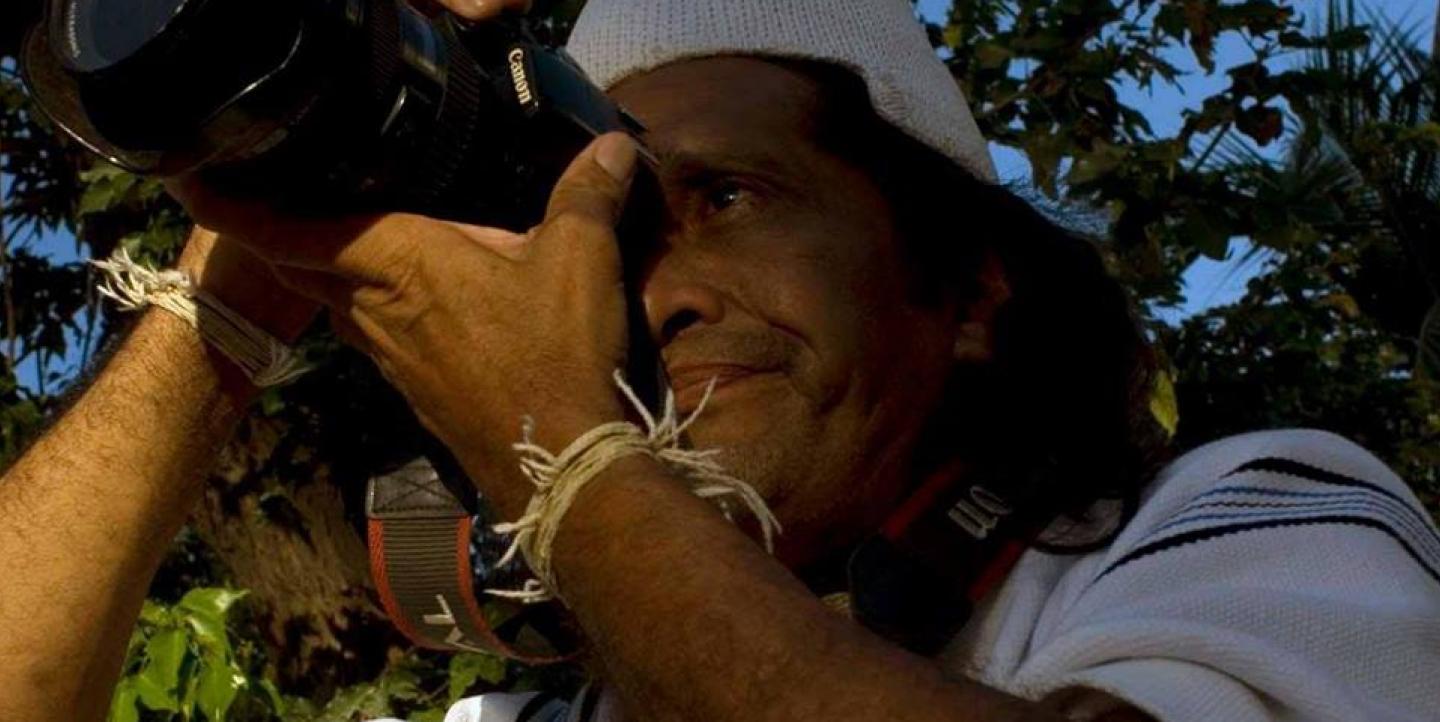For some, communication is a powerful tool to make themselves — and their community — visible out of their own contexts. Proof of this is Yosokwi Productions, a collective of photographers, producers and documentary filmmakers from the Indigenous community of Arhuaco in the Sierra Nevada de Santa Marta, Colombia — a place that, according to its inhabitants, is the heart of the world.
The project began in 2002 during a conversation between Amado Villafaña and his Mamo, José de Jesús Izquierdo, the spiritual leader of the community, near the basin of the Guatapuri River. At that time, communication seemed to be the best tool to confront worsening violence in the region, caused by both armed militant groups and military forces.
“We need to look outside for allies, we need to broadcast what’s happening here,” said “Mamo Donki,” to Villafaña.
From that point forward, two main ideas have motivated Villafaña’s work: self-representation of his people and collective ownership of knowledge and forms of communication — in contrast to the emphasis on individual rights in non-Indigenous communities.
The project began as Zhigoneshi Communications, inside the Organization Gonawindúa Tayrona — the term Zhigoneshi can be translated as “you help me, I help you” — and consisted of three Indigenous communities from the Sierra mountains: the Koguis, Wiwa and Arhuacos. Later each community formed its own collective, and Yosokwi became the Arhuaco voice in the Tayrona Indigenous Confederation, the Arhuaco's community organization.
“The initial goal was to create a film about who we are and how we think about this land,” Villafaña explains.
Its initial work was experimental, but Yosokwi later gained support from individuals like Stephen Ferry, a photographer with National Geographic, who helped them acquire equipment and access training workshops. Other opportunities for collaboration later arose, such as with the anthropologist Pablo Mora, the Pontifical Xavierian University and the Avina Foundation.
Today Yosokwi has compiled an archive of more than 600 hours of film and 50,000 photographs. Its documentaries have been shown in film festivals throughout the world and in movie theaters in Colombia. Some of its films have received awards and recognitions, such as the Audience Award from the Panorama Festival for Colombian Film and the Award for Best Documentary Film at the Espiello Festival in Spain. Each work offers an account of the Arhuaco community’s understanding of the world, its vision and its theories about the origin of the universe.
For Villafaña, there’s a fundamental difference between his organization’s work and that of mainstream media: “The mass media has manipulated things over the years. Communication should be real; without staging, without deception.” Villafaña also draws a parallel between a camera and a machete: “These tools are useful for whatever purpose you ascribe to them.” If used incorrectly, they can cause harm, he says.
One of the main challenges for Yosokwi Productions has been to transition from its tradition of predominantly oral communication to the use of visually focused communication. “Now one hears through his eyes,” says Villafaña.
Visual and multimedia communication has been the method through which they have presented their message to the world in an effort to raise consciousness about various issues. The protection of nature, the fight against mining and respect for autonomy are at the heart of the causes they defend.
“With their entry into using this new form of communication, the Arhuacos are leveraging an effective instrument that increases the effectiveness of their struggle to defend the Sierra region,” says professor Guillermo Padilla, who holds a doctorate in Latin American Studies with a focus on Legal Anthropology.
Among Yosokwi’s main productions are Big Words, Nabusimake, Naboba and Resistance. These documentaries were initially created in the Arhuaco, Wiwa and Kogui languages, and later subtitled in Spanish, English and French.
Villafaña says that a move to new forms of communication was a response to the question, “How do we continue to exist?” He thinks that other Indigenous organizations should use their own voices to tell the world who they are and fight for the causes they care about.
“We are not alone,” he says, “but if we remain silent, it will be as if we were.”
*Thank you to Ginna Rivera and Guillermo Padilla, who conducted the interview with Amado Villafaña in the heart of the world (Sierra Nevada de Santa Marta, Colombia)
Main image shows Amado Villafaña, courtesy of Yosokwi Productions.

